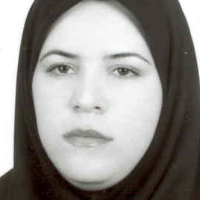Agronomic and economic study of the most appropriate time of continuous lettuce cultivation in greenhouse and open space conditions in Jiroft area
Author(s):
Abstract:
Abstract Jiroft area, with upwards of 1250 ha of greenhouses and 250000 ton of yield, is one of the most important areas for production and supply of greenhouse products in Iran. Lettuce is one of the salad vegetable crops that is planted in vast areas in open space and greenhouse conditions. In this study, Great Lakes 118 lettuce variety was planted in a split-plot experiment with factorial design, eight treatments and three frequencies. The studied treatments were planting condition at two levels of greenhouse and open space, planting dates in Oct. 7 and Oct. 22, and 3 and 4 cultivation frequencies in greenhouse and 1 and 2 frequencies in open space. Lettuce plantings were pre-planted in nursery and were transferred after four-leaf process (20-25 days). Planting rows were provided with 6 m length, 70 cm width and 30 cm distance from each other. Shrubs were planted in greenhouse and open space with 8-10 cm distance from the border, 2 rows and 25 cm distance in every plot. Measured factors were: plot yield, total yield per unit area, average head weight and the amount of nitrate accumulation in leaves. On the base of results, total yield of product in greenhouse and open space was 167.9 t/ha and 41.22 t/ha, respectively. Economic analysis showed that the investment in treatment Oct. 22 with four frequencies under greenhouse condition was superior to others and the gross profit of lettuce production in greenhouse condition was more than some other crops.
Language:
Persian
Published:
Journal of Soil and Plant Interactions, Volume:2 Issue: 7, 2012
Page:
29
https://magiran.com/p950410
مقالات دیگری از این نویسنده (گان)
-
Comparing the profitability of commercial date cultivars in Kerman province
, BAHAREH DAMANKESHAN *, Bahman Panahi
Journal of Research in Horticultural Sciences, -
Economic Evaluation of Medicinal Plant Cultivation in Kerman City
*, Davood Darvishi Zeydabadi
Journal of Research in Horticultural Sciences,


